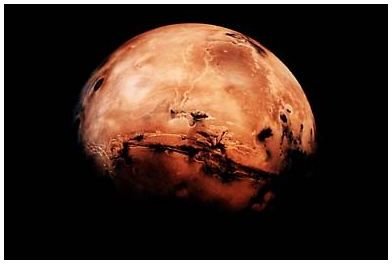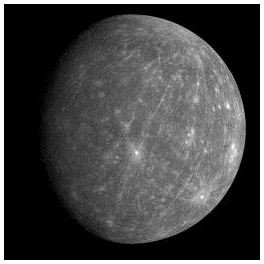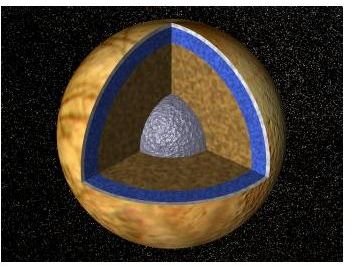So, There Is Water In Space... Now What?
Elusive Water
So far, scientific explorations of the visible parts of the Solar System have confirmed that water exists. This is good news for a number of reasons. Water is an essential ingredient in the recipe to create life. Liquid water, along with chemicals like oxygen, hydrogen, carbon and an energy source create the perfect conditions for life to happen. Although scientific evidence does not currently suggest that any other planets in our Solar System support intelligent life, the presence of liquid water could indicate an environment suitable for single-cell organisms.
So where can water be found in the Solar System? The more accurate question might be, where can’t water be found!
Water On The Moon
Scientist once thought the Moon was one of the most arid places in the Solar System. In 2009, however, NASA scientists launched a mission to the Moon—NASA Lunar CRater Observation and Sensing Satellite (LCROSS) and after impacting the rocket booster into a crater they confirmed that the rocky crater contained water. The impact, however, was just part of the more elaborate Lunar Precursor Robotic Program (LPRP), robotic spacecraft missions to the Moon to collect data on the satellite and lead the way towards future manned missions. New results, released by LCROSS in October of 2010, revealed that the Moon has a water cycle and most of the water found in the rock is in the form of pure water ice. NASA believes this information might be vital for future space explorers, offering a water source on the Moon that may be easy to retrieve.
Water In The Inner Solar System

Billions of years ago, the planet Mars may have had shallow lakes or a vast ocean covering greater than 35% of its surface. This theory has been supported by images that show dried up riverbeds and gullies. Until recently, however, only water vapor and water ice were thought to be present on the cold desert planet. Pictures taken by the Mars Global Surveyor probe, however, indicate that liquid water may still flow across the planet occasionally. The pictures indicated that water may have broken free from an underground source and was briefly able to travel across gullies before freezing in the planet’s low temperatures or boiling away from the thin atmosphere.

Mars and Earth are not the only examples of water in space. Mercury, the planet closest to the Sun, can experience temperatures of 840 degrees F (450 degrees C), a temperature that would quickly boil away any water on the surface. Since the planet is barely tilted on its axis, however, its poles are permanently shielded from the Sun and ice is believed to exist in the bottom of craters at the poles.
Water In The Outer Planets

When it comes to the existence of water in space, the moons of the outer Solar System planets seem to have the most activity. Take Europa, Jupiter’s sixth largest moon as an example. Europa has some similarities to Earth’s Moon including similar sizes and no atmosphere. Its distance from the Sun has left Europa with a surface of solid ice; scientist, however, believe that a liquid ocean is under the surface. In fact, it has been hypothesized that the liquid ocean of this smooth moon contains twice as much water as all the oceans and rivers of Earth combined. According to NASA, this ocean could be as much as 50 kilometers (31 miles) deep. Jupiter’s seventh moon, Ganymede, the largest moon in our Solar System and seventh moon of Jupiter is also thought to contain a hidden ocean of salty water.
As for the planet Saturn, it may only contain a trace amount of water. Its rings, however, are mostly composed of water ice. Saturn also has over 50 confirmed moons and most, if not all, contain water ice. The density of Rhea, Saturn’s second-largest moon, suggests that it is 75% water. The NASA’s Cassini spacecraft, found that Titan, Saturn’s largest moon and the only known moon with an atmosphere, is likely to contain an ocean of ammonia and water deep within its dense surface. Enceladus, another of Saturn’s moon has water geysers that may be fed by underground water reservoirs.

Although not as much is known about the “ice giants” of Uranus and Neptune as the other planets, scientist do think they are composed of icy mantles, made up of water, ammonia and methane. Their moons also contain water. The inner moons of Uranus, for example, are roughly half water ice. Neptune’s major moon, Triton could also have a subsurface ocean.
Water, in some form or another, appears to be abundantly distributed in space. Trans-Neptunian objects in the Kuiper Belt, Oort Cloud and scattered disc all contain water ice.
The Importance Of Water In Space
For space travelers, water could be even more valuable than gold! As scientific exploration continues, additional human missions to the Moon and other planets in the Solar System are likely to occur. For men to survive living and working in space, water will be necessary. Although water could be carried from Earth, water is heavy and bulky, taking up valuable space in a craft, adding extra weight and increasing expenses. Water that exists in sufficient quantities in other locations could be used to make rocket fuel by separating hydrogen from oxygen. Places with liquid water could even function as temporary way stations. One day in the future, a manned Moon base-camp might exist that can support space travelers as they journey across the Solar System.

References
The Ingredients For Life (https://www.bbc.co.uk/science/space/life/beginnings/)
NASA Images Suggest Water Still Flows in Brief Spurts on Mars (https://marsprogram.jpl.nasa.gov/mgs/newsroom/20061206a.html)
Vast Ocean Covered One Third Of Surface Of Mars (https://www.telegraph.co.uk/science/space/7824616/Vast-ocean-covered-one-third-of-surface-of-Mars.html)
NASA Missions Uncover the Moon’s Buried Treasures (https://www.nasa.gov/centers/ames/news/releases/2010/10-89AR.html)
Cassini Spacecraft Finds Ocean May Exist Beneath Titan’s Crust (https://www.nasa.gov/mission_pages/cassini/media/cassini-20080320.html)
